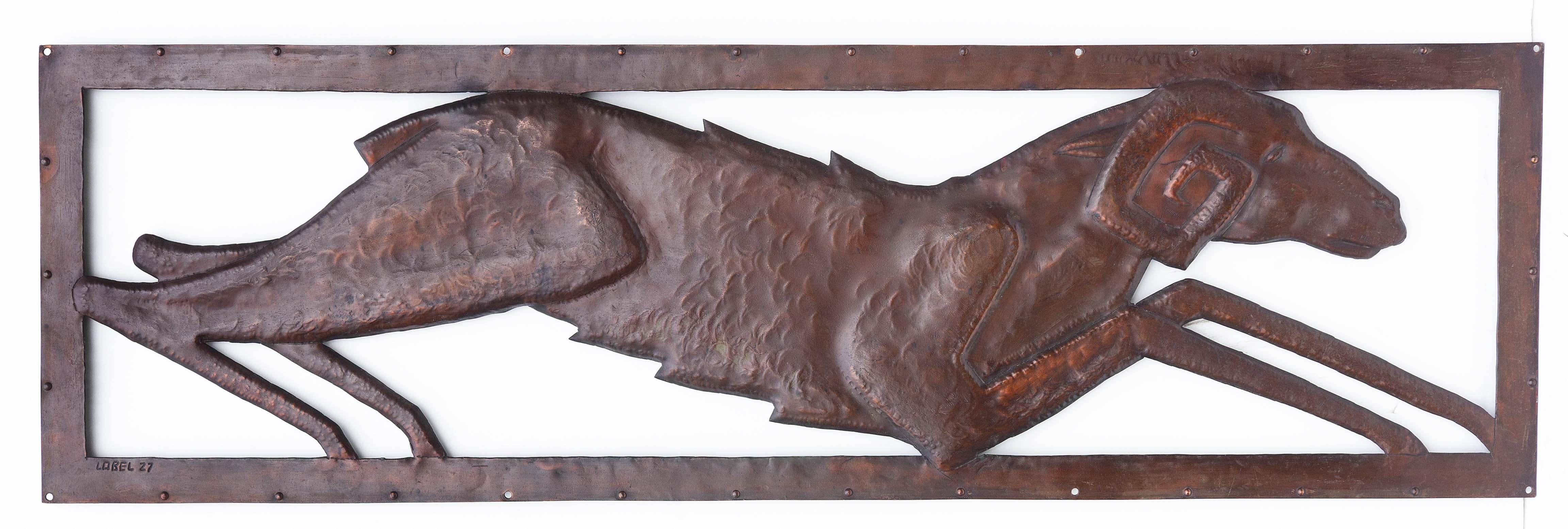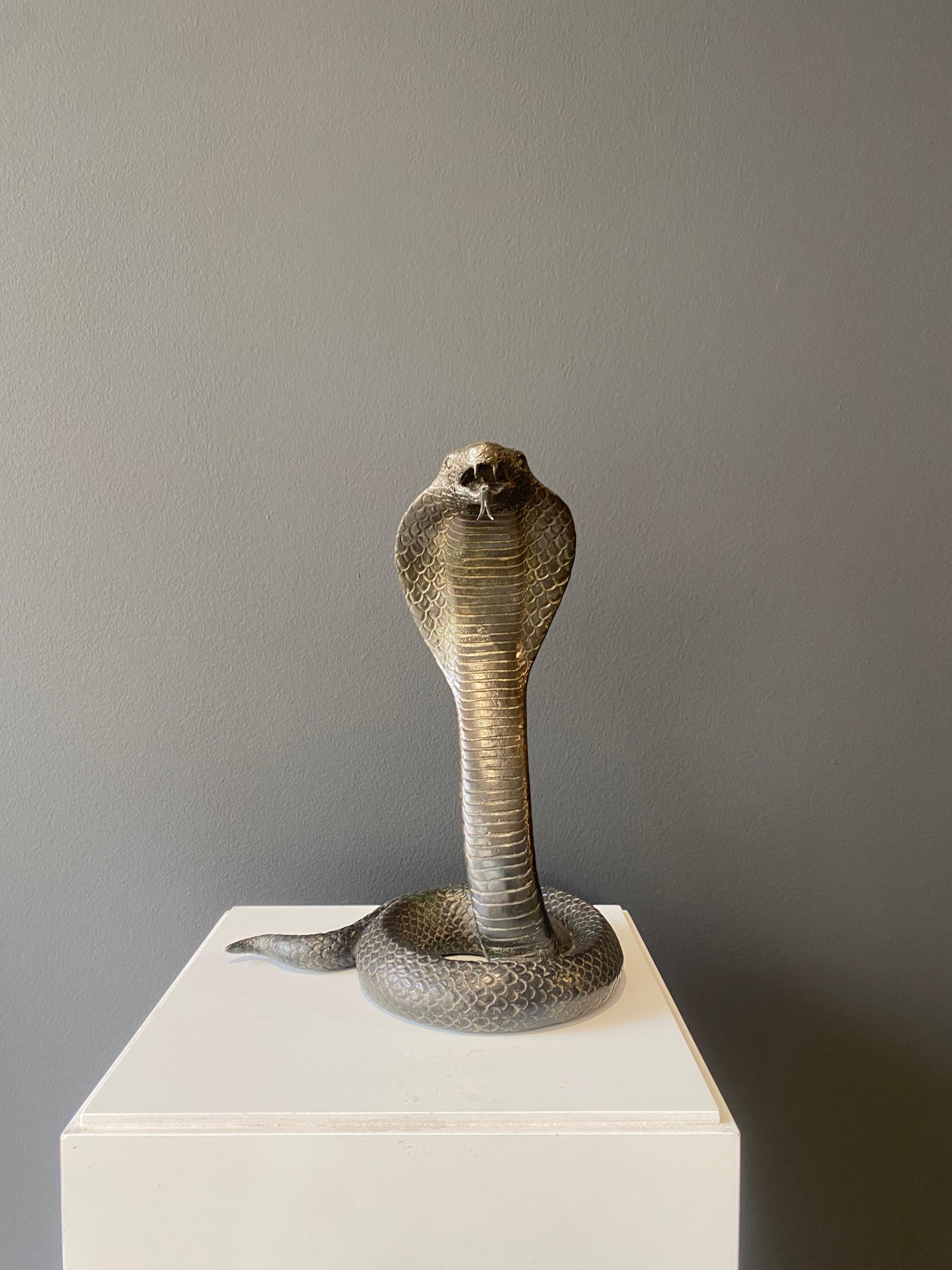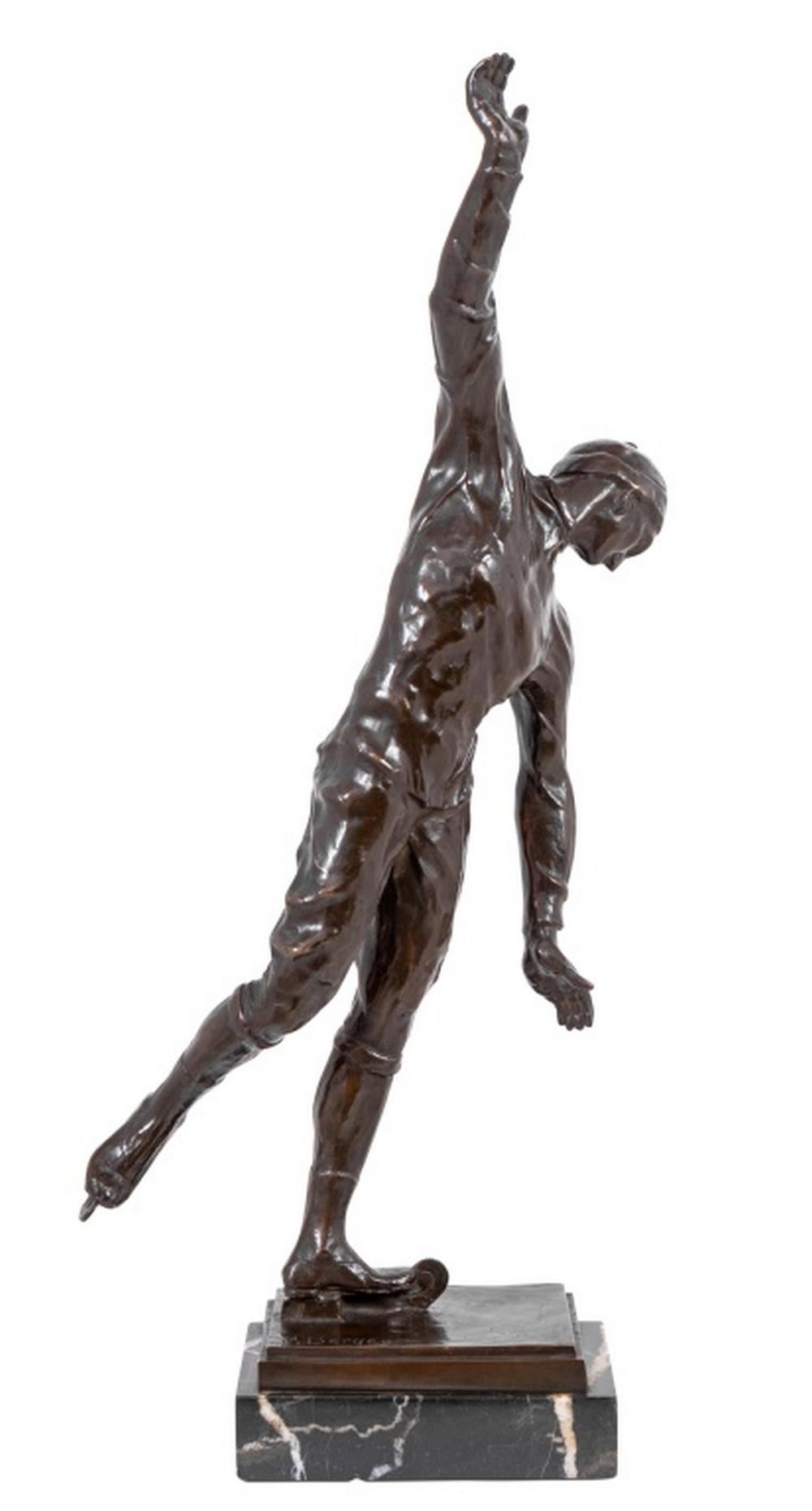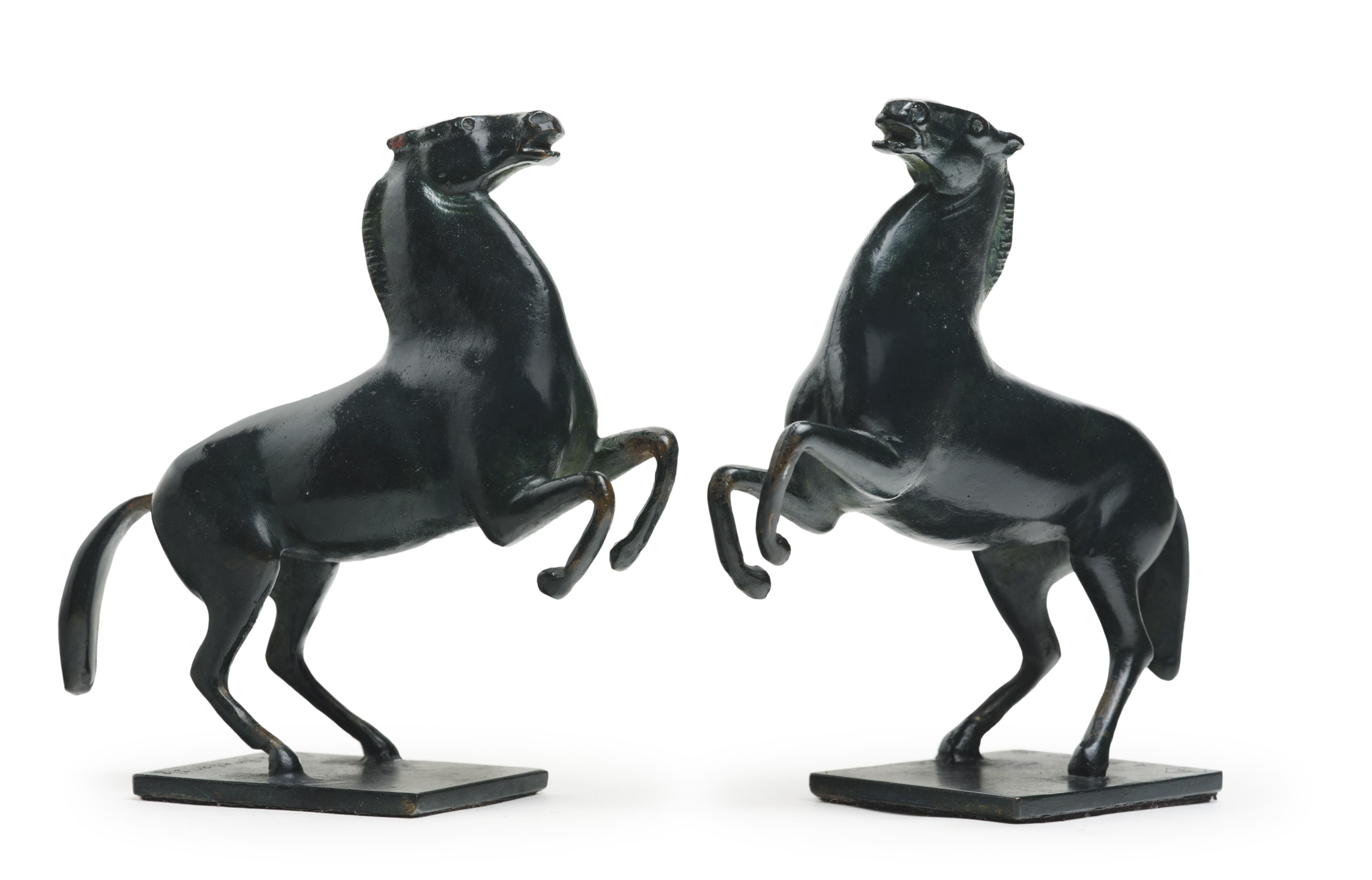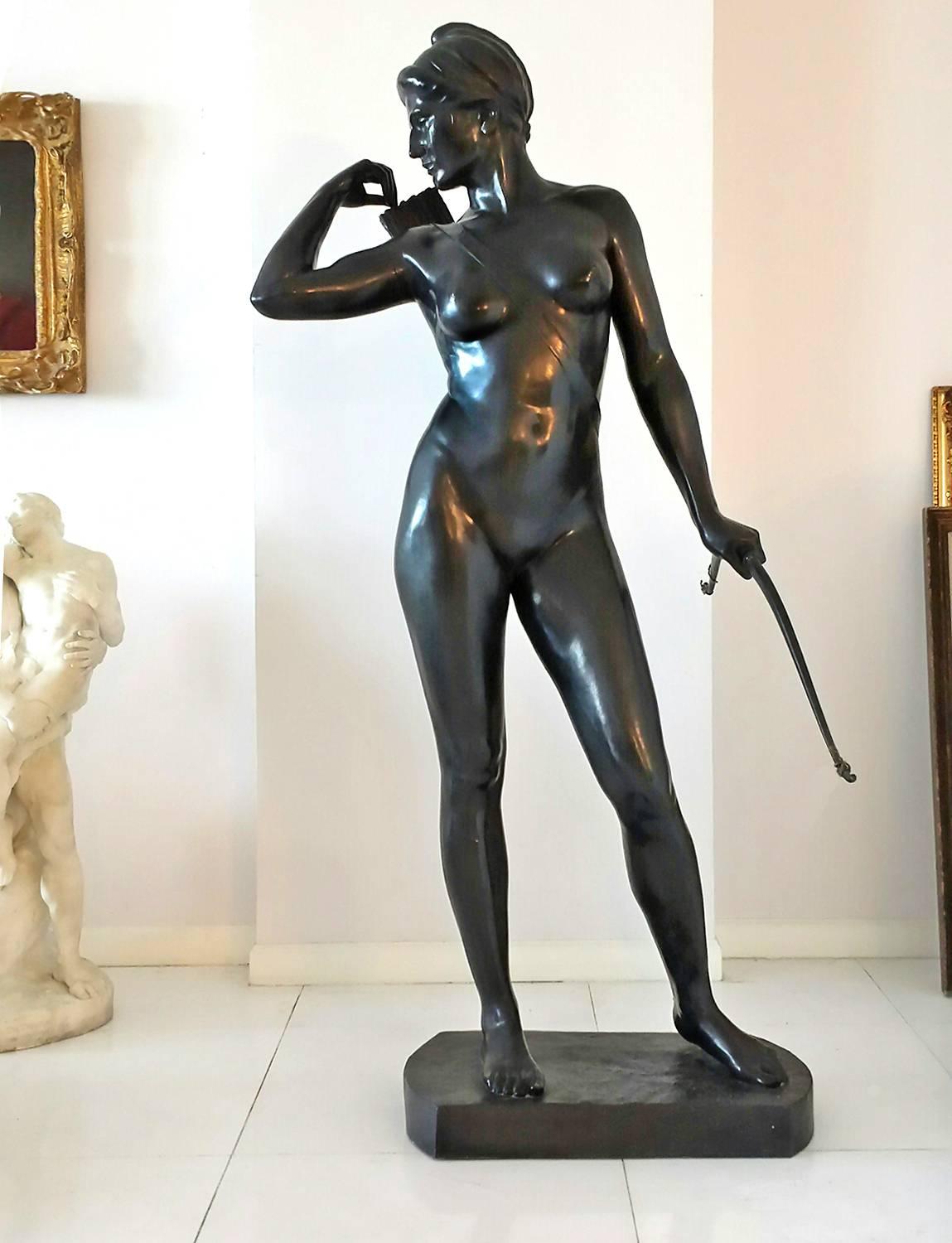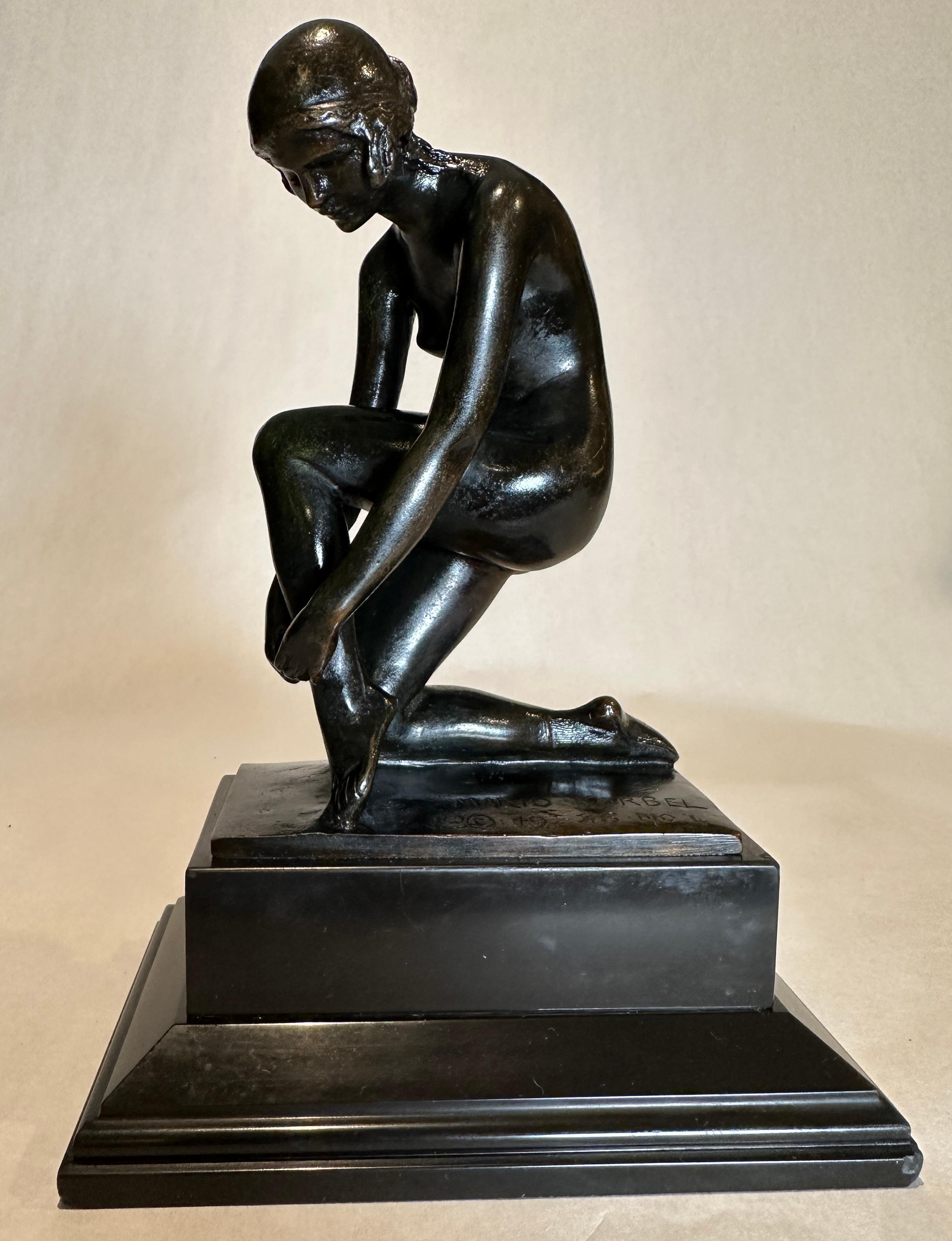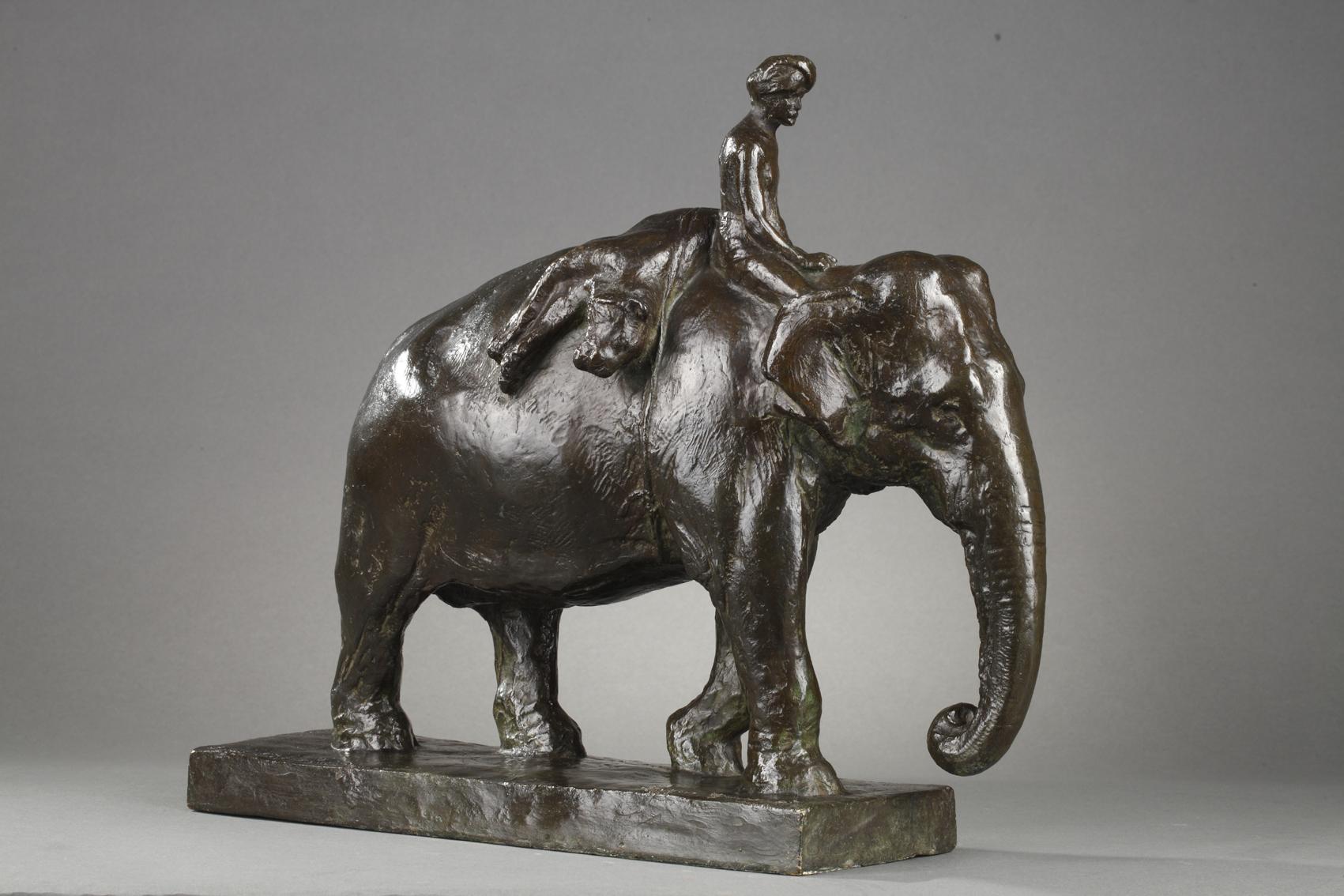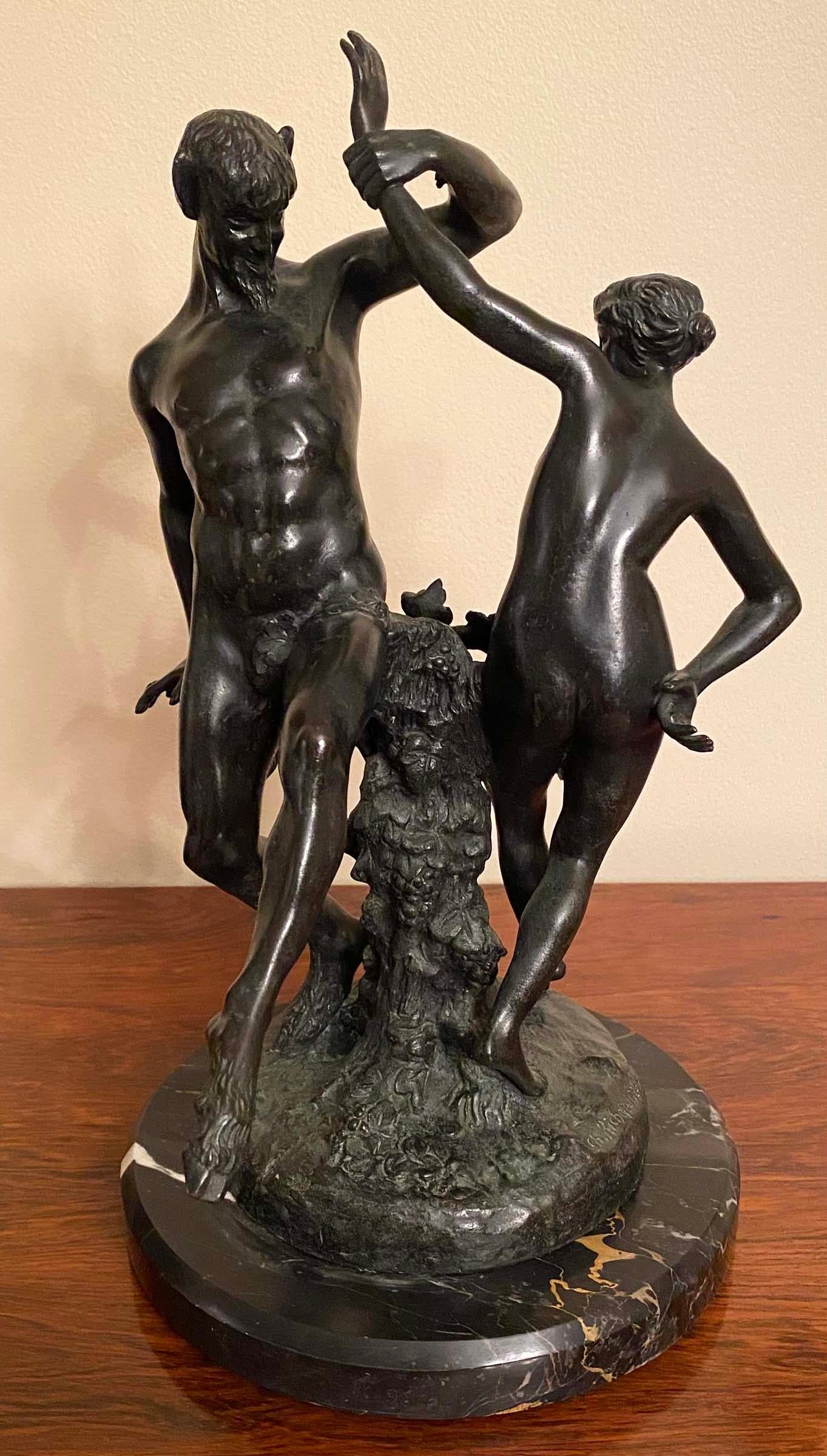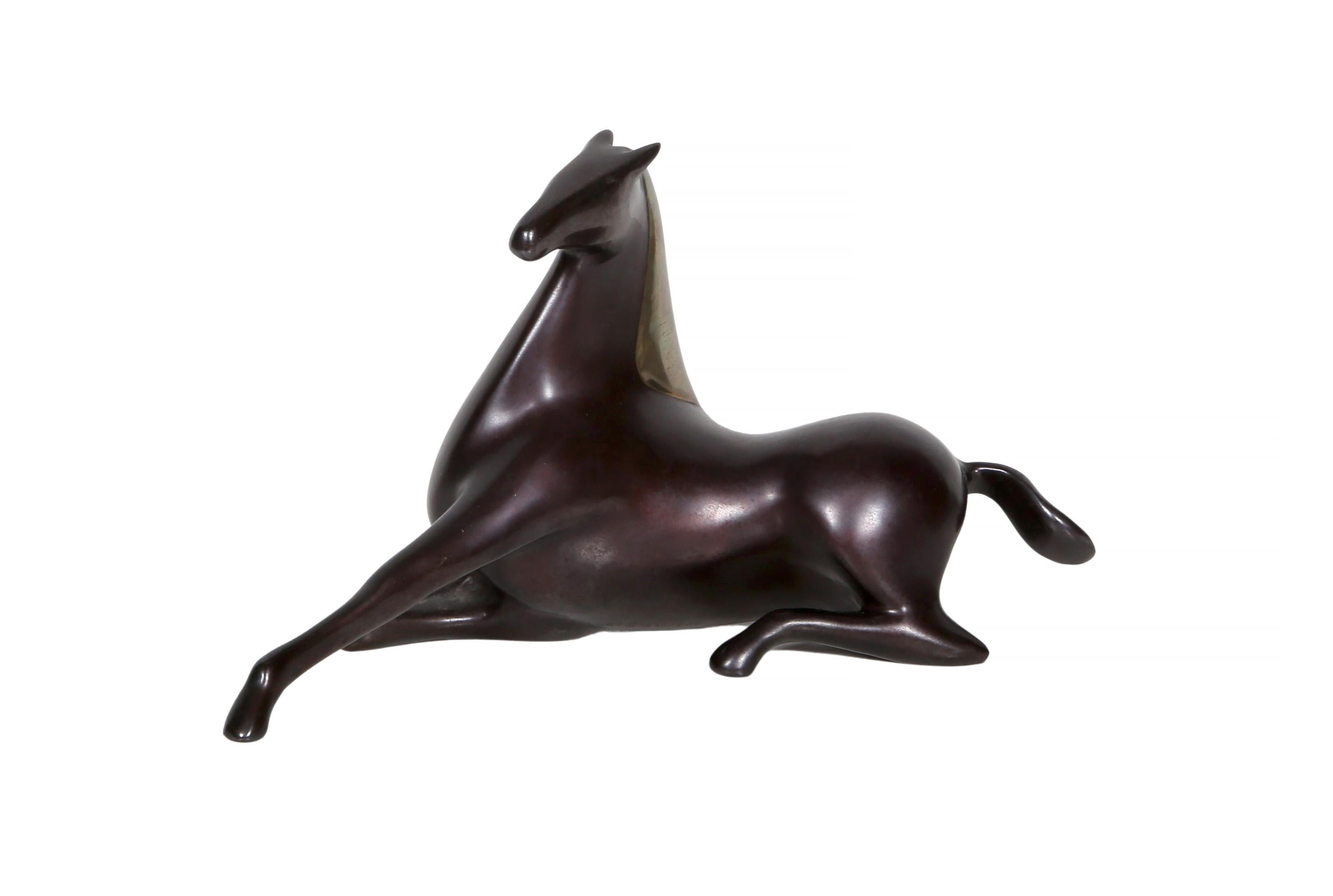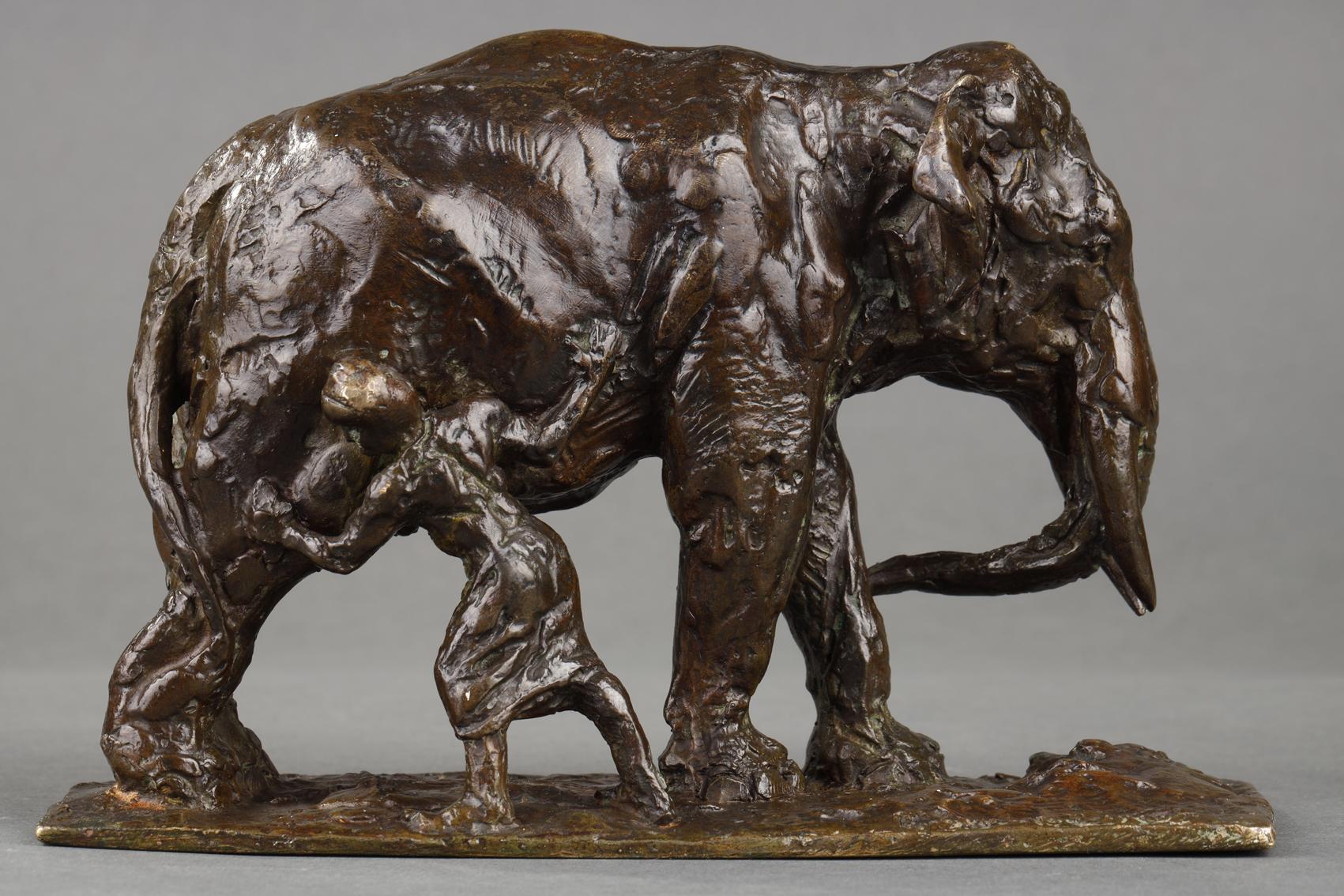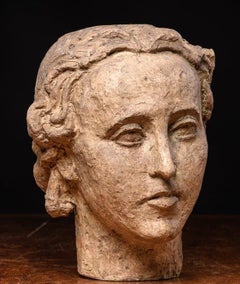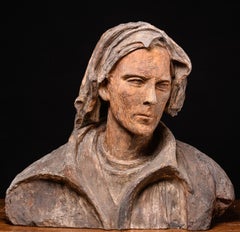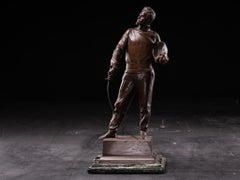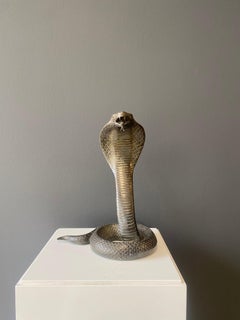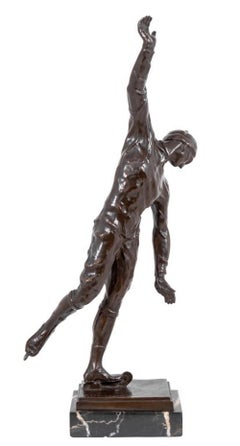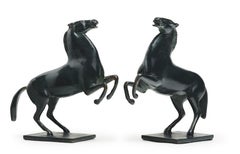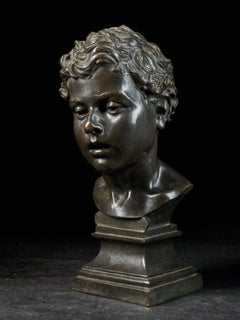
Henri Van Hoeter (1871- ), Bronze Portrait Buste of a Young Man, signed
View Similar Items
Want more images or videos?
Request additional images or videos from the seller
1 of 9
UnknownHenri Van Hoeter (1871- ), Bronze Portrait Buste of a Young Man, signed1930
1930
About the Item
About the Seller
5.0
Vetted Professional Seller
Every seller passes strict standards for authenticity and reliability
1stDibs seller since 2021
15 sales on 1stDibs
Authenticity Guarantee
In the unlikely event there’s an issue with an item’s authenticity, contact us within 1 year for a full refund. DetailsMoney-Back Guarantee
If your item is not as described, is damaged in transit, or does not arrive, contact us within 7 days for a full refund. Details24-Hour Cancellation
You have a 24-hour grace period in which to reconsider your purchase, with no questions asked.Vetted Professional Sellers
Our world-class sellers must adhere to strict standards for service and quality, maintaining the integrity of our listings.Price-Match Guarantee
If you find that a seller listed the same item for a lower price elsewhere, we’ll match it.Trusted Global Delivery
Our best-in-class carrier network provides specialized shipping options worldwide, including custom delivery.More From This Seller
View AllSculptured polychromed Female modelled Head from artist workshop.
Located in brussel, BE
Gustave Fontaine (Etterbeek 1877-1952 Brussels) was a sculptor–painter. He took courses in Saint-Josse-ten-Noode and continued his training at the Aca...
Category
20th Century Art Deco Figurative Sculptures
Materials
Plaster
$1,803 Sale Price
41% Off
Sculptured polychromed Male modelled Bust from artist workshop.
Located in brussel, BE
Gustave Fontaine (Etterbeek 1877-1952 Brussels) was a sculptor–painter. He took courses in Saint-Josse-ten-Noode and continued his training at the Academy of Brussels and with the sculptor Julien...
Category
20th Century Art Deco Figurative Sculptures
Materials
Plaster
Bronze by Herbert Cawood of Sir Lugard
Located in brussel, BE
Sir Frederick Lugard, baron of Abinger, UK kolonial and administrator Hong Kong en Afrika.
Herbert harry Cawood (1890-1957)
Signed and dated
Category
20th Century Figurative Sculptures
Materials
Bronze
19th, Bronze Patinated statue of Fencer
Located in brussel, BE
Godefroid Devreese(19 August 1861 – 31 August 1941) was a Belgian sculptor. His work was part of the sculpture event in the art competition at the Olympics. He first studied with his...
Category
19th Century Figurative Sculptures
Materials
Metal
18th C Polychromed fruitwood carved statue depicting Maria Magdalena, Germany.
Located in brussel, BE
This beautiful polychrome and highly expressive statue 18th C statue represents Mary Magdalene in prayer, hands joined, eyes raised to the sky.It's of German origin
Category
18th Century Other Art Style Figurative Sculptures
Materials
Wood
Gustave Fontaine (1877-1952), polychromed model head.
Located in brussel, BE
Gustave FONTAINE ( Etterbeek 1877-1952 Brussels). Sculptor–painter. Took courses in Saint-Josse-ten-Noode, continued his training at the Academy of Brussels and with the sculptor Julien Dillens...
Category
20th Century Contemporary Figurative Sculptures
Materials
Plaster
You May Also Like
Art Deco Sculpture by Paul Lobel RKO Roxy Theatre Rockefeller Center
Located in Rochester, NY
Bronze art deco ram sculpture by Paul A. Lobel from the RKO Roxy Theater, Rockefeller Center, New York. Hand wrought. Provenance: RKO, Roxy Center Theatre; Mr. Eugene Lee Schoen; Mr. Neal Prince & Mr. Herbert Wade Hemphill Jr.; Mr. Neal Prince; The Trust of the above; Heritage Auctions.
Presented by Joseph Dasta Antiques
Paul Lobel (1899 - 1983): The accomplishments of Paul A. Lobel, industrial designer, metalsmith, sculptor and cartoonist/illustrator, may be viewed as the quintessential American success story. Born in Romania, at the turn of the century, he emigrated to the United States while an infant, and, from humble beginnings on Manhattan’s Lower East Side, grew up to attain a one-man show in Paris in 1925, win two awards at the International Exposition of Decorative Arts in Paris in 1932, be the subject of two exhibitions at the American Museum of Art and The Museum of Modern Art in New York City. He also founded an innovative jewelry and metals studio/shop in New York’s Greenwich Village. Furthermore, his contemporaries regarded him with awe and almost everything he attempted came to fruition.
In the summer of 1926 Lobel exhibited 35 works, including drawings, etchings, paintings, metalwork and sculpture, in a one-man show at the Grande Librairie Universelle in Paris. During the next year, he toured London, Rome, Florence, Rotterdam, Brussels and Berlin, then, broke, returned to America where he again rented desk space and tried to resume his advertising career. But he was haunted by the modern design that he had been exposed to in Paris. So, after borrowing money to open a metalwork studio on Lexington Avenue, he sought out architect Eugene Schoen, an enthusiast of modern design, whom he had formerly been introduced to by Boardman Robinson. Schoen was in the process of opening a gallery devoted to showing the work of designers and craftsmen imbued with the spirit of modernism...
Category
Mid-20th Century Art Deco Figurative Sculptures
Materials
Bronze
Cobra, Unknown, 20th century, Bronze, Animal, Snake, Design, art deco, Cast
Located in Geneva, CH
Cobra, Unknown, 20th century, Bronze, Animal, Snake, Design, art deco, Cast
Category
20th Century Art Deco Figurative Sculptures
Materials
Bronze
Leo Berger "Skater" Patinated Bronze
Located in Astoria, NY
Leo Berger (Swiss, 1885-1973) "Skater" Patinated Bronze Sculpture, early 20th century, possibly depicting the Swedish ice skater Gillis Grafstrom, on a marble plinth, signed "L Berge...
Category
Early 20th Century Art Deco Figurative Sculptures
Materials
Bronze
Pair of Prancing Horses, two bronzes signed and numbered by Arno Breker
Located in PARIS, FR
An official artist of the Nazi regime, trained in Montparnasse in the 1930s, Arno Breker continued to sculpt after the fall of the Third Reich, producing large-scale public commissions in Germany and portraits of prominent figures. The two small bronzes presented here, dated around 1978, are part of a long tradition of prancing horses dating back to antiquity. The asymmetrical treatment of the two front legs and the inclination of the head make these two copies of the same artwork a highly decorative pair.
1. Arno Breker, a prolific sculptor, from the Bohemia of Montparnasse to the commissions from the Third Reich ... and from the Federal Republic of Germany
The son of a stone carver, Arno Breker studied fine art and anatomy in his native Elberfeld. At the age of 20, he entered the Düsseldorf Academy of Art. He moved to Paris in 1926, where he continued his training in the studio of Maillol, who dubbed him "the German Michelangelo of the twentieth century". He shared a studio with Alexandre Calder and frequented Jean Cocteau, Foujita, Brancusi, Pablo Picasso and other artists of the bohemian Paris of the time. It was also in Paris in 1933 that he met Demetra Messala, the daughter of a Greek diplomat who posed for Maillol and Picasso, whom he married in 1937. Having won the Prussian Prix de Rome in 1932, he left Paris to stay at the Villa Massimo, the German Academy in Rome.
Returning to Germany in 1934, his style evolved towards a more marked imitation of ancient sculpture. He created two monumental statues for Berlin's Olympic Stadium, before being appointed professor at the Berlin College of Fine Arts in 1937. He came to the attention of the Reich Propaganda Ministry, which awarded him several commissions and provided him with three large studios in which Breker produced many monumental sculptures to the glory of the regime. On June 23, 1940, Breker accompanied Adolf Hitler during a visit to Paris. During the Occupation, his political connections enabled him to intervene on behalf of many artists pursued by the Nazis: for example, he protected Pablo Picasso (then a Communist) from Kommandantur officers.
Most of Arno Breker's work was destroyed in Berlin at the end of the war in 1945 by bombing and intentional destruction perpetrated by soldiers of the victorious powers. After the fall of the Nazi regime, however, Arno Breker was never prosecuted. He opened a new studio in Düsseldorf, where he sculpted until his death in 1991.
He then carried out several public commissions in Germany (Bayreuth, Wuppertal), as well as portraits of numerous personalities, including King Mohammed V of Morocco, Léopold Sedar Senghor (commissioned by the Académie Française in 1978) and the two chancellors of the Federal Republic of Germany, Konrad Adenauer and Ludwig Erhard. The Arno Breker Museum in Nörvenich is now exhibiting some of his artworks.
2. Related artworks: from the Wild Horses of the Quirinal to the Horses of Marly
The prancing horse is a major iconographic theme, found in a series of sculptures from Antiquity, the Renaissance and the Classical Age. Various photos from Arno Breker's studio in Berlin confirm the predominant place of equine representations in his work (alongside male nude statues), and confirm that this reduced version created in 1978 is part of the artist's preferred repertoire.
Prancing horses are generally associated with a male figure in a group that, through a reference drawn from Antiquity, symbolizes man's domination over nature. In this respect, it is very interesting to compare our small bronzes with the horse forming part of a large sculpture by Arno Breker (made in 1936 and probably destroyed in 1945) depicting Alexander taming Bucephalus.
This statue is itself directly inspired by one of the best-known works of 18th-century French sculpture...
Category
1970s Art Deco Figurative Sculptures
Materials
Bronze
Magpie
By Jan and Joel Martel
Located in PARIS, FR
Magpie
by Jan and Joël MARTEL (1896-1966)
A rare and genuine bronze sculpture with a dual patina, dark brown and gilded
Signed to the front of the base " J. Martel "
Cast by " Susse...
Category
1920s Art Deco Figurative Sculptures
Materials
Bronze
Young girl sitting at her toilet
By Joseph Bernard
Located in PARIS, FR
"Young girl sitting at her toilet"
also known as "Young girl with braids"
by Joseph BERNARD (1866-1931)
Sculpture in bronze with a nuanced brownish dark green patina
Signed on the ...
Category
1920s Art Deco Nude Sculptures
Materials
Bronze
